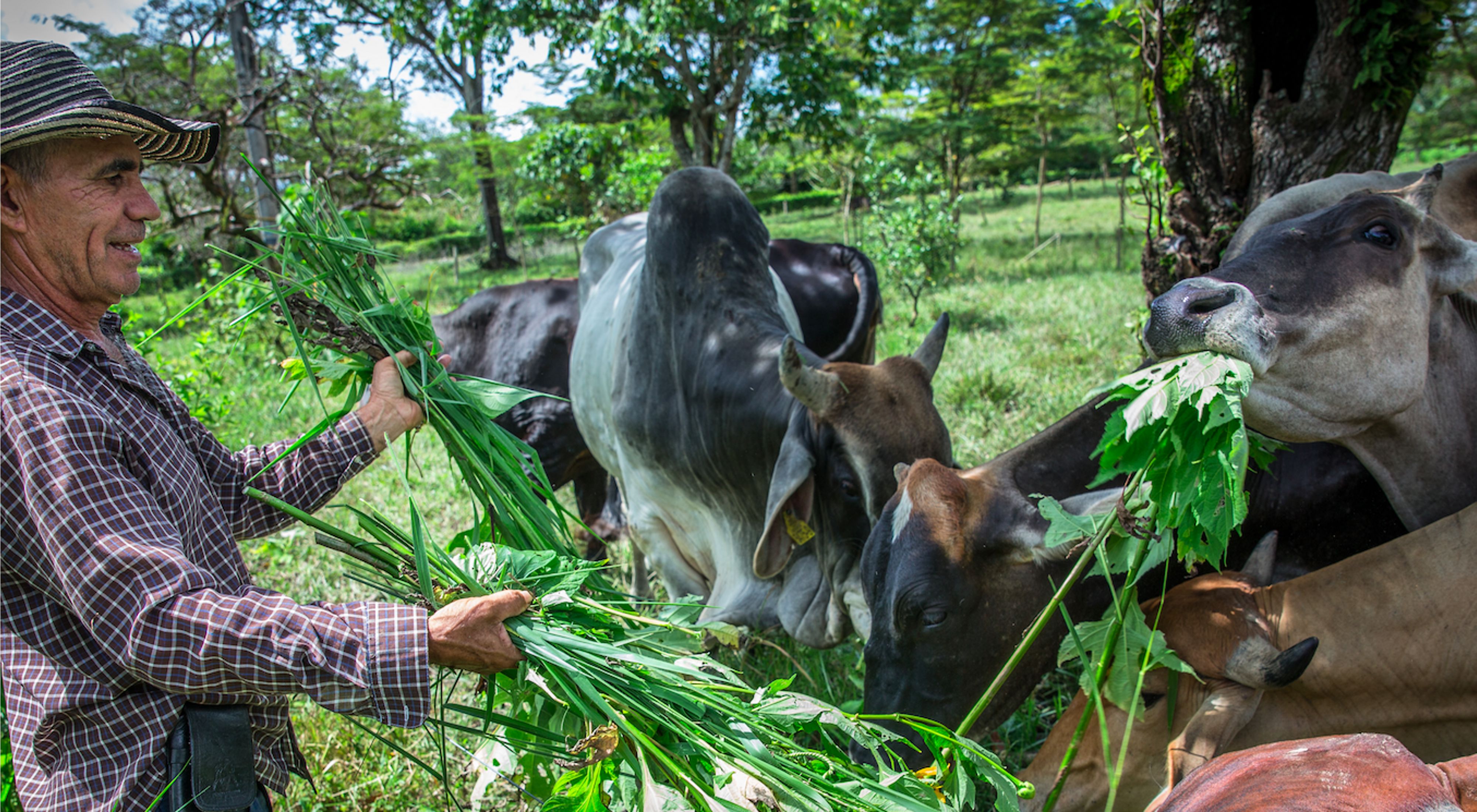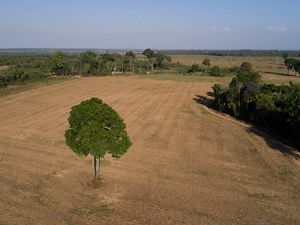Transforming Agriculture to Unleash the Regenerative Power of Nature
Agriculture is not an extractive industry. Or at least it’s not supposed to be.
By Ginya Truitt Nakata, Former Director of Lands, Latin America
Around the world, as many as 1.1 billion acres of agricultural lands have already been depleted of their productive value, sapped of the rich biodiversity that sustains them, their soils exhausted of nutrients or deprived of moisture and blown away by the wind. The UN’s Food and Agriculture Organization estimates that, given the ongoing deterioration of the world’s top soil, we may have as few as 60 annual harvests remaining before our capacity to produce food is pretty much spent.
Are we really going to farm ourselves out of existence?
Herein lies a great paradox. As the world community struggles with the challenge of feeding a growing population and the consequences of a warming planet, many producers continue to walk away from agricultural land because its productive value has been tapped out. Before they do, they often find themselves spending more of their hard-earned cash to apply ever-increasing amounts of fertilizers and herbicides, which themselves hasten the march to depletion. And when the land gives up its last gasp, some call it quits while others move on to convert more forests, grasslands and other critical natural habitats to cropland and pastureland—until they, too, become too weak to produce.
It doesn’t have to be this way.
Science, economics and experience in the field tell us that it is entirely feasible to increase global food production without converting more natural habits to agriculture. Regenerative agricultural practices can replenish the soil on the world’s existing croplands and pastures, conserve the water and rich biodiversity of surrounding areas, and change the agriculture sector from a greenhouse gas emitter to a climate change solution.
What’s required is a major transformation away from extraction and depletion and toward practices that use the magic of biodiversity to improve and sustain farmland’s vigor and productivity, as well as to maximize agriculture’s potential to take carbon out of the atmosphere and sink it into the ground (which itself makes the soil more productive).
These practices have been underway for 30 years or more in many places and have showed enormous potential, but they must be scaled up quickly if we are to avert a disaster that could play out during our children’s lifetimes. Results from the field demonstrate that with a focused effort a producer can realize this turnaround within three to five years.
The way to make it all happen is to first recognize that a largely extractive approach serves no one—not the farmer, not agribusinesses, not rural communities, and not humanity at large. A comprehensive change is not just a desirable outcome but rather is absolutely essential to the future productivity and profitability of the world’s agricultural systems.
As the most biodiverse region on the planet, and now as the world’s largest net food exporter, Latin America is positioned to show the world how biodiversity can be a core source of agricultural productivity and profitability. While its importance as a global food provider continues to grow, that growth has come at a price and many challenges remain.
The World Bank recently reported that two-thirds of Latin America’s farmland has already been degraded, and studies show the region’s agriculture sector has become a leading global emitter of greenhouse gases. Meanwhile, the convert-and-deplete approach to farming continues to threaten some of the world’s most environmentally sensitive natural habitats—from the Amazon forests and Argentina’s Gran Chaco to Colombia’s Orinoquia and through to the biodiversity hotspots of Central America and Mexico.

That said, Latin America is also where efforts to fundamentally change how farming is done are taking hold. Ranching operations are finding that silvopasture, which incorporates trees and other vegetation into pasturelands, are producing more (and more nutritious) food and increasing their profits while enhancing biodiversity, protecting natural habitats and reducing their climate impact.
And soybean farmers are able to significantly increase the productivity and value of their main cash crop—while boosting soil health and mitigating climate change—by reducing tillage, rotating in other crops and planting winter cover vegetation. Another win-win.
But these regenerative practices need to be scaled up quickly.
To make that happen, the market itself must start calculating the value of the future productivity of agricultural land, rather than only this year’s harvest. By applying what is known as “true-cost accounting,” we can begin to quantify the market value of ecosystem services without which lands cannot produce.
When we look at it this way, strengthening habitats, biodiversity and soils is about more than simple ecology—it is also a solid business proposition. The fact is that while we are talking about bringing agriculture back into harmony with nature, the productivity improvements this brings will benefit farming operations from top to bottom and stakeholders all along the agricultural value chain.
Case Study: The Brazilian Cerrado
The Brazilian Cerrado is a case in point. It is an enormously biodiverse area three times the size of Texas that consists of a mosaic of natural habitats, from dense forests to open savannas, about 45% of which has already been cleared for agriculture. And scientists have noted that this ongoing conversion is driving changes in the hydroecology of the region, affecting rainfall patterns and creating drier conditions that are negatively impacting farm productivity. Indeed, a persistent and damaging drought in Matopiba, an agriculturally productive area in the northeast of the Cerrado, has been directly linked with the loss of natural vegetation in the region.
Despite all this, converted landscape in the region is valued on the market at three to four times what it would be if left in its natural state—a valuation that, unsurprisingly, drives further conversion. We can set the stage for breaking this cycle by including in this calculation a more realistic valuation of what the Cerrado’s natural habitats and rich biodiversity provide to maintaining healthy soils—as well as of the damage that is caused when they are lost.
We have a choice to make
The choice is simple. We can continue with a model that largely ignores nature and continues to diminish biodiversity and deplete soils—all at great risk to our capacity to produce food for a steadily growing global population. Or we can stop the gradual degradation caused by what is, in effect, strip-mining farmland. Instead, by putting nature at the center of agriculture, farming can renew, restore and sustain the land that gives producers their livelihoods. If we do this, we can enable them to produce more food indefinitely.
The essential key to all of this is recognizing that land is a finite resource that must be nurtured to maintain its productivity. Once we do that, the miracle of regeneration will enable agricultural producers to help repair the climate while feeding a growing global population. We just have to work with Mother Nature rather than fighting against her. Ultimately, that is a battle we cannot afford to lose.
Originally Posted on Chicago Council on Global Affairs
November 26, 2018


